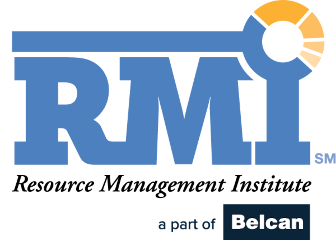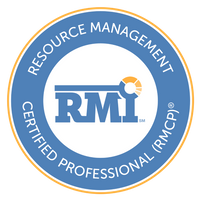I had another topic picked for this article, and then two completely unrelated events happened. First, an attendee at a panel discussion I was on shared the term “relationships before service” in the chat window; second, I got a notification that Gallup had just released its annual State of the Global Workplace.
Let’s start with the bad news first.
The growing problem of disengagement
According to Gallup, “eighty percent (of employees) are not engaged or are actively disengaged at work.” On top of that, a new Harris/Fast Company Poll survey found that the majority (52%) of U.S. workers are considering a job change this year. To make matters worse, close to half (48%) of six-figure salaried workers polled are also planning on switching jobs.
What makes these numbers particularly troubling is that the most disengaged employees are rarely the first ones out the door which makes these numbers at least partially additive. We can try and blame this situation on Covid, but the truth is that work was already making people miserable long before the pandemic. The good news is that we, as part of the PPM/RM community, can take steps to fix some of what’s wrong.
How managers can use their agency
I would never have thought to borrow a term from the Peace Corp, but something about Relationships before Service struck a very deep chord with me. If 80% of our employees are hanging on by a thread, then maybe “just doing our job” (our service) isn’t enough. Perhaps we need to listen to people and meet them where they are now.
It’s been my experience that anyone with “manager” in their job title can very carefully fix problems by “flying below the radar.” As PMs and RMs, we have more power to change the culture than we think. If we can’t do it under our own banner, we can recruit others to help us (portfolio managers, finance managers, etc.) The key is to identify the root cause of overwork and disengagement (generally too much work going on simultaneously) and then start fixing it, one project at a time.
If that sounds pie-in-the-sky, let’s break the problem down into pieces, starting with people first. To create an environment where people want to work, consider using the BACCS model[1].
Relationship to build: Belongingness
We need teams – especially if we don’t have offices. For 300,000 years, human beings have found affiliation with other people to be a positive survival trait. If we no longer share the same office space with other people, we need something to glue us together. Sharing a goal with a team creates a greater level of intimacy than simply being co-workers.
Service to provide: Stop assigning people to tasks. Go back to assigning them to projects, programs, or epics. Ensure people know the reason behind the work they are doing, and visibly celebrate success at the end of the project.
Relationship to build: Autonomy
If you want to kill creativity, innovation, and any joy a person can obtain from their job, micro-manage them. We all know how a micromanaging boss behaves, but are we guilty of similar behavior when we over-schedule a person to too many projects? Or, as a PM, over-commit them to too many tasks?
Service to provide: Stop estimating work for people. Ask them how long something will take and schedule those hours, not the hours someone else made up for them.
Relationship to build: Competence
Some people don’t belong in the profession due to a lack of talent. Some people have a different calling in life, and their hearts will never be in the work you are asking them to do. Everyone else just needs to have the opportunity to grow and develop.
Service to provide: I’ve heard PMs say they manage projects, not the people. People are the project. If someone is struggling, don’t ignore it. Find out why and plan to fix it. It might surprise you, but many people in your company would be delighted to run a one- or two-day workshop to help others upgrade their skills. Plus, online learning has gotten so inexpensive, most employees can and will pay for it themselves if you encourage them.
Relationship to build: Certainty
Human beings love certainty, even when they know the only true certainties in life are death and taxes. In truth, the certainty most people are looking for is future-oriented. People want to know about anything that will impact their personal plans (like keeping their job so they can afford to send their children to college.)
Service to provide: Honesty and your reputation for fair dealing are often the only service you can offer regarding certainty. And they go a long way.
Relationship to build: Safety
The exact definition of safety varies by company. At some companies, safety is the assurance that no one will knife you in the back while you are busy doing your job. Other companies have chosen to focus on workplace bullying (where the guilty party is usually an inexperienced manager.) The secret to safety is a strong company culture that defines acceptable behavior.
Service to provide: Can an RM or a PM provide safety in a corporate culture where it’s not second nature? Yes, they absolutely can. A project culture is and always has been a sub-culture within companies, with its own rules and mores. RMs and PMs are the keepers of that culture. More importantly, we tend to forget that anyone can lead as long as people chose to follow.
In my blog series One Matchstick at a Time, I discussed how burnout is NOT an employee mental health issue stemming from COVID-19. In fact, once we understand its importance, taking steps to fix it might be easier than you think.
By focusing on the BACCS model – the power of belonging to a team with a shared goal, giving people autonomy, encouraging employees to up-level their skills and competencies, providing certainty about the future through honesty and transparency, and championing a culture of safety – we can continue to pull employees back from burnout, increase engagement, and improve the productivity of organizations.
[1] The BACCS model is a variation on David Rock’s SCARF model tailored to fit a project environment
Donna Fitzgerald first discovered the wonders of resource management when she was assigned to help productize the home-grown resource management system at Oracle. Having once been Silicon Valley CFO as well as a program manager she immediately recognized that resource management was the key to getting strategy executed. As an ex-Gartner analyst her research has also led her to believe that good RM is the key to keeping employees healthy, happy and engaged at work.





